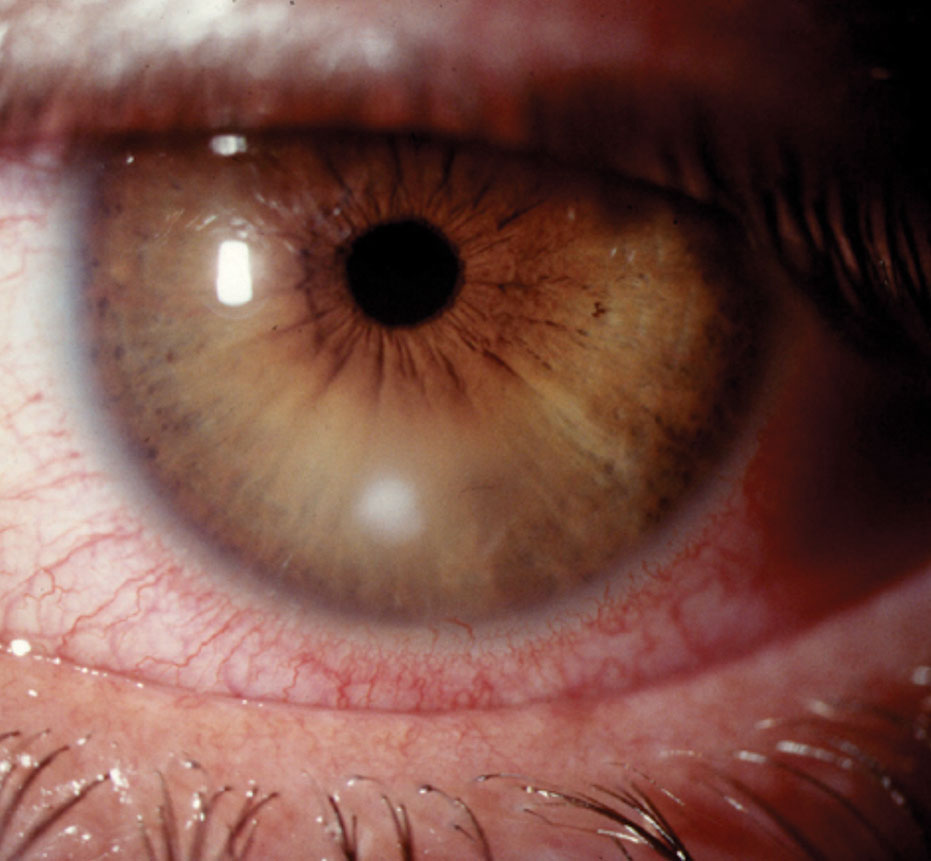 |
|
Culture-negative bacterial keratitis had less severe infection and better outcomes when compared with positive cultures. Photo: Joseph W. Sowka, OD. Click image to enlarge. |
The microbiology of bacterial keratitis is not consistent worldwide as it is affected by geographic and economic factors, but it has been shown that the most common causative organisms are similar across the globe with a higher percentage of gram-positive infections. In a recent study, researchers aimed to review clinical features, causative organisms, potential complications and ocular outcomes of 263 bacterial keratitis cases from 2007 to 2019, which included 169 cases (64.3%) of culture-positive bacterial keratitis.
Gram-positive bacteria were found to be the causative organism in 106 cases (62.8%) in agreement with previous studies that found these bacteria to be the most frequent cause of microbial keratitis. The most common types were coagulase-negative staphylococci (CoNS) (23.1%) and Pseudomonas (23.1%), which also agrees with previous studies.
“CoNS are part of conjunctival normal flora, and the risk of contaminated cultures should be taken into consideration during clinical interpretation,” the authors noted. “The high prevalence of Pseudomonas in our study may be explained by the hot dry weather of Riyadh city. In a study on seasonal variation and bacterial keratitis, a high rate of Pseudomonas keratitis was noted during the summer.”
The other factor that may have contributed to the high rates of Pseudomonas is the large percentage of contact lens wearers (24.7%). “Contact lens wearers were more likely to develop gram-negative bacterial keratitis, particularly P. aeruginosa,” the study authors noted. “Similarly, a significant trend toward gram-negative bacteria in contact lens-related keratitis was found by previous reports. Ocular surface disease, including dry eye disease, exposure keratopathy, ocular rosacea, neurotrophic keratopathy and mucus membrane pemphigoid was prevalent.”
Complications included visually significant scar, perforation, cataract, non-healing epithelial defects, corneal neovascularization, endophthalmitis and hypotony. Culture-positive bacterial keratitis was associated with the development of anterior chamber reaction on multivariate analysis.
“Gram-positive bacteria were the most common causative organisms in our sample,” the investigators concluded. “Culture-negative keratitis had less severe infection than culture-positive bacterial keratitis. Factors associated with poor outcome in the present study included diabetes, poor presenting visual acuity and positive cultures.”
Almulhim A, Alkhalifah MI, Kalantan H, Alsarhani WK. Bacterial keratitis: clinical features, causative organisms and outcomes during a 13-year study period. Cornea. September 5, 2022. [Epub ahead of print]. |


